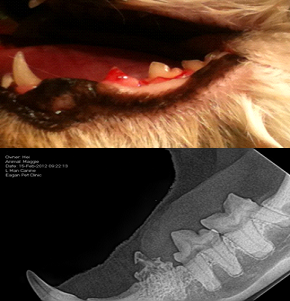Eagan Pet Clinic
4395 Rahn Rd Call (651)454-5684 for an appointment! |
Eagan Pet Clinic
(651)454-5684
www.eaganpetclinic.com
|
Resorptive Lesions in Cats
Resorptive Lesions are Painful for our Feline Patients
Has your veterinarian diagnosed your cat with resorptive lesions? Feline oral resorptive lesions are very common. As of yet, we do not know why they occur. What we do know, is that they result from the activation of cells called odontoclasts. These cells are responsible for the normal remodeling of tooth structure. In this disease process, however, they will continue to resorb tooth structure until in some instances the entire tooth is lost. It has been reported that 60% of cats over 6 years of age have at least one, and those that have one usually have more. They tend to occur at and just below the gumline; however, they may affect only the root structure. The teeth most commonly affected are the premolars, followed by the molars and finally the canines. The majority of the lesions are on the buccal surface (on the outside of the tooth, against the cheek), however you can also see them on the inside. These lesions can be excruciatingly painful, especially when they are advanced. If you probe one of the lesions even under general anesthetic, the cat will react. However, most cats will not show evidence of oral pain, even when the tooth is fractured with an exposed root canal. Diagnosis is done by a combination of visual and radiographic means. The lesions will usually start out as little erosions along the gumline with associated inflammation to the gums in the area. They can progress to large holes in the teeth, and eventually can destroy most of the tooth. In severe cases, the entire crown of the tooth can be lost, with only the roots remaining. These lesions will usually be rough when an explorer is rubbed along the suspected lesion. Dental radiology is used to diagnose lesions under the gumline, to determine the extent of the lesion, as well as to determine if there is any root pathology. In addition, as the disease progresses, the lesion will again become painful, and our feline patients don't tend to show us pain. The only effective treatment for resorptive lesions is extraction of the affected tooth. |



